- Experimental investigations of Co3O4, SiO2, cotton seed oil additive blends in the diesel engine and optimization by ANN-SVM process
A.P. Senthil Kumara, S. Yuvarajb,* and S. Janakic
aAssistant Professor, Department of Mechanical Engineering, PSG College of Technology, Coimbatore, India
bAssistant Professor, Department of Aeronautical Engineering, Sri Ramakrishna Engineering College, Coimbatore, India
cAssociate Professor, Department of Mechanical Engineering, SNS College of Technology, Coimbatore, India
The demand for alternative
fuel replaces the pure utilization of diesel fuel in the engines. Nano
additives and the biodiesel are introduced as the additives for reducing the
emission characteristics and fulfil the energy requirements. The main objective
of this research is to determine the emission characteristics of metal
additives and cottonseed added diesel. Three combinations of cobalt oxide
contributeto the fuel blend preparation, namely, cobalt oxide + cottonseed oil,
Cobalt oxide + silicon oxide and separate cobalt oxide in the diesel fuel. Such
combinations are mixed in the diesel fuel by adopting the method of ultrasonic
dispersed technique with three different proportions such as 25 ppm, 50 ppm and
100 ppm of Nano additives and B20, B40 and B60 blends of cottonseed oil. The
strategy of Artificial Neural Network-Support Vector Machine (ANN-SVM) is
applied to optimize and predict the better-reduced emission characteristics of
CO, HC and NOx through the mat lab platform. The testing is carried
out with five different load conditions such as 0, 25, 50, 75 and 100 N
and a constant compression ratio 17.5. Terminally, the comparison between
predicted and experimented values are also presented for determining the better
cobalt oxide fuel blend combinations with minimum emission outflow. The
combination of both additives such as silicon oxide and the cobalt oxide
proceeds better emission characteristics from both the predicted and the experimented
outcomes. In which, the predicted outcomes are 64.1% of NOx, 0.018%
of CO and 1.610% of HC.
Keywords: : Cobalt oxide, Cottonseed oil, Silicon oxide, Additives, ANN-SVM, Brake thermal efficiency
Energy plays a major role in the daily survival of humans
and certain sectors of power generation, transportation,
and industries. The vast demand for fossil fuels results in the
energy crisis due to its depleting and non-renewable behavior. In the
application of IC engines, itemits certain harmful gases while burning in the
engine [1]. The supreme emission characteristics are achieved on the basis of
proper combustion and performance behaviors of the engine [2]. The diesel
engine promotes better efficiency than the petrol engine and so, the diesel
engine performs as a prime mover application in several engineering fields. The
emission from the pure diesel fuel results the global warming disturbed air
quality and uncontrolled human health [3]. Carbon monoxide, hydrocarbon and
nitrous oxides are the major emission gases, which produced from the diesel
engine. Therefore, it is necessary to reduce the effect of such emission rates
by means of alternative fuels such as bio and nano fuel [4].
The need for alternative fuels from sustainable sources is increasing
and it also acts as a substitute for fossil fuels. The preservation of
the environment and sustainable development is achieved by the
utilization of an alternative fuel [5]. Many types of research are carried out
by the application of alternative fuels such as vegetable oil, certain oil
obtained from the seeds on diesel engines. The biodiesel and the nano additives
added diesel behaves less toxic and eco-friendly [6]. The biodiesel
incorporates complete industrial and commercial interest. It emits a
fewer amount of particulate emissions and
less quantity of unburnt carbon monoxide,
hydrocarbons and sulfur oxides etc. [7]. There are nearly 400 oil-bearing
plants are identified as the alternative additive agent for diesel, in which
soybean, cottonseed oil, peanut oil, safflower, sunflower, rapeseed
etc., are considered as major utilized oil.
The use of pure vegetable oils in the diesel may cause engine
problems such as fouling of the injector, incomplete
combustion, carbon deposited in the injector and poor
atomization of fuel. This is due to its certain worst characteristics such as
higher ranges of flash point, pour point, density and viscosity level [8]. Such
issues are overcome by the application of certain Nano metal additives. The
reduction of pollution range and the enhancement of combustion
efficiency are improved by the
application of fuel additives. The several metallics based
catalytic additive particles that contribute to the emission
controls are listed as copper, barium, manganese, iron etc.
[9]. Nanoparticles are added as the molecular form into the diesel and its
contribution todiesel fuel is actingas a most peculiar concept [10]. In the
recent advances, many types of research are carried out with the help of nano
additives to the diesel, biodiesel and its blends. The clogging action is also
prohibited with the help of nanoparticles because of its micron-sized particles
[11]. Silicon oxide is commonly used in the several
ceramics and the glass industries. It possesses better
behavior for minimizing the harmful gases from the emission rates [12]. In
addition to this, cobalt oxide plays a significant role inburning activities in
the combustion chamber. The nanoparticles of cobalt oxide
offer a perfect cycle life and high reversible capacity [13].
From the overall applied combinations, the process of
optimization promotes the precise outcome of the emissive characteristics.
Taguchi and ANOVA optimization processes are deeply utilized in several industrial
types of research [14]. Several algorithms are also contributed toprediction
and optimization purposes for different emission
characteristics of the fuel blend. ANN process is an enriched
utilized algorithm in several emission research applications [15,
16]. In this present work, three varieties of cobalt oxide combinationsare
blended in the base diesel fuel with three different proportions for analyzing
and minimize the emission characteristics of harmful gases. In addition to
this, the obtained experimental emission outcomes are
optimized and predicted with the assistance of the
ANN-SVM algorithm. Finally, a contrasting behavior is achieved for selecting
the optimal fuel additive combinations in between the experimental and the
predicted outcomes.
The emission characteristics such as NOX, HC, CO, CO2
are reduced in the combustion stage of biodiesel after the addition of ZnO
nanoparticles. Research work has been performed by Deepti Khatri
et al. [17] to reduce the formation of emission in a
diesel engine with the help of ZnO nanoparticles. Here, the ZnO nanoparticles are
added with diesel fuel at five various weights in between 5 to 25 mg. The
emission characteristics of ZnO nanoparticle blend biodiesel were analyzed
under six various loads such as 2 kW, 4 kW, 6 kW, 8 kW, 10 kW and 12 kW at 1500
rpm engine speed. Suresh Vellaiyan et al. [18] had performed an investigation
to reduce the emission of diesel with the help of ZnO incorporated water
emulsified soybean biodiesel. The experimentation was performed under the full
load condition of single-cylinder, natural aspirated, and four-stroke diesel
engines based on Taguchi L 16 array construction. According to the GRC and S/N
ratio, the emission characteristics of the fuel blend were analyzed. After the
addition of ZnO incorporated water emulsified soybean biodiesel with diesel,
the diesel engine performs well in terms of emission and workload. A waste
cooking oil (WCO)-based biodiesel was preferred by Cheruiyot et al. [19] to
reduce the emission characteristics of diesel. In which, the
preferred biodiesel blended with the diesel under 5 different
ratios named as B20, B40, B60, B80 and B100. Up to B60, the reduction rate
emission was increased, but after the blend range of B60, the reduction rate of
emission was reduced due to the viscosity property.
This research paper is sorted as follows: The existing
utilization of bio and Nanofuel from the different research papers are surveyed
in section 2. In section 3, the methodology, which proposed in this work, is
demonstrated with the flowchart representation. The utilized materials,
preparation of additive fuel blends and the methods used for the purpose of
optimization and prediction are briefly categorized in section 4. The
experimental results obtained from the testing of three proposed additive combinations
are provided in section 5. Terminally, section 6 concludes the presented work
with the attaining future scope.
The significant contribution of our proposed work is given
below:
> To develop an
alternative fuel blend toreplace the use of
pure diesel and minimize the emission characteristics.
> The
ANN-SVM algorithm contributes to identifying the
optimal fuel blend and forecasting the optimally selected
fuel blends on the basis of emission characteristics.
In the above flowchart, Fig. 1 demonstratesthat our
proposed fuel blend model. Initially, the diesel fuel is prepared by the mixing
of three different combinations of cobalt oxides in diesel fuel,
namely, cobalt oxide + silicon
oxide, cobalt oxide + cottonseed oil and separate cobalt
oxide by using the ultrasonically dispersed strategy. These
three combinations are added with three different proportions.
Then, in the middle stage, the prepared blends are
tested to determine the emission rates, such as CO, HC and
NOx. Finally, the experimental outcomes are optimized
and new outcomes are predicted via ANN-SVM algorithms. In addition to this, the
predicted gained outcomes are contrasted with the experimental outcomes to
assess the better emission ranges.
Test
engine and fuel preparation methods
In this paper, the influence of different cobalt oxide combinations
in diesel fuel is analyzed byavoiding certain design
modifications of the engine. The selection of materials, fuel blend separation
and working principles involved in the experiments are categorized by this
section.
Materials and machines used Diesel engine
The Kirloskar TV-1 four-cylinder diesel engine is utilized
to test the prepared fuel blend combinations of diesel
additives namely, Co3O4+SiO2, Co3O4+cottonseed
oil and separate Co3O4.
The specifications of the utilized diesel engine are tabulated
in Table 1. The facilitation of loading activities and
measuring emission behaviors is accomplished by the Eddy current dynamometer
and AVL digital 444 analyzer. Both these devices are connected at the end of
the diesel engine.
Testing procedures
Thetesting of proposed three different combinations of
additive added fuels are carried out with five distinct load conditions like 0,
25, 50, 75, and 100 N and with a constant compression ratio of 17.5. Three
different units are comprised of the diesel engine named fuel consumption unit,
load, and emission-measuring unit. The working activities, which involved in
the Kirloskar Tv-1 diesel engine are signified in Fig. 2. The fuel, which
ignited from the engine, is further measured by these mentioned units to
determine the emission characteristics.
Additives
Cottonseed oil and two different nanoparticles such as
cobalt oxide and silica particles are added in the base diesel fuel for
enhancing the emission behaviors of the engine. Thecobalt oxide gives a better
clean burning and it reduces the emission rate of unburnt hydrocarbon. The
oxide content in the Co3O4 particles is response and
manage the burning behavior and diminishing the NOx generation. In
addition to this, two additional additives namely, cottonseed oil and silicon
oxide particles are separately added with the cobalt oxide. The cottonseed oil
and the silicon oxide particles achieve the minimum formation of harmful gases
when added with the cobalt oxide. Such additives are selected
on the basis of its boiling point and the size of the nanoparticles. The
preferred nano size of the particles is 6 nm to 8.5 nm. In addition to this,
the availability of the additive materials and its satisfied cost are also
considered as its major criteria. The thermo physical properties of the
utilized cottonseed oil and nano particles are listed in Table 2.
Fuel
blend preparation
The additives such as cobalt oxide, silicon oxide, and cottonseed
oil are added in the base diesel fuel with three prepared proportion of blends.
These entire combinations are leaded by the contribution of
cobalt oxide. So, both the nanoparticle (silicon oxide) and the bio agents (cottonseed
oil) are utilized with cobalt oxide throughout the paper.
• Cobalt
oxide (25 ppm, 50 ppm, 100 ppm)
• Cobalt
oxide + Cottonseed oil (25 ppm, 50 ppm, 100 ppm + B20, B40, B60)
• Cobalt
oxide + Silicon oxide (25 ppm, 50 ppm, 100 ppm)
ANN-SVM prediction and optimization
The optimization and the prediction of the emission
performance of fuel blends are analyzed by using the ANN-SVM
strategy. This strategy optimizes and predicts the values
based on engine loading conditions and compression ratio. The supreme role of
the artificial neural network and support vector machine to
optimize the testing conditions and emissionbehaviours of the
blends and predict the performances for the optimally selected blends. Several
explicit issues are solved by an interlinked processing layer in the model of
ANN. In addition to this, SVM supports to supervising the classification and
regression techniques. The blend of ANN-SVM strategies quickens the prediction
and optimization process by fitting the several regression issues [20, 21]. The
decision function of support vector classification (SVC) decision function is,

Where αi are the lagrange multipliers
which explain only the non-zero values and kernel function is denoted as k.
The regression function of the support vector machine
is expressed as,

The nonlinear function hi based ANN
regression function f is defined as,

Where ith hidden node attains in the
hidden layer are denoted as hi and
wi denotes the weight.

Here, weight is mentioned wi,j, and jth
the input variable is denoted as xj. SVM eliminates the noise
from the dataset and the dataset is refined by train the ANN. ANN quickly
predicts the new data points and the prediction accuracy of both methods is the
same. There are two training phases in ANN-SVM and the first phase of SVM trains
the dataset.

Here, xi it mentions the input feature
vector and yi mentions
the target output value. Based on the regression function or
the decision of trained SVM, obtains the function values  for
each data point xi. The input feature vector and the function
values are used to obtain the new refined dataset
for
each data point xi. The input feature vector and the function
values are used to obtain the new refined dataset  in the
second phase. The fitted function values are taken based on the training set
value of ANN. New data points are tested based on the regression function of
trained ANN and the classification problems are solved using ANN-SVM methods.
The given below table represents the regression function for the ANN-SVM
methods.
in the
second phase. The fitted function values are taken based on the training set
value of ANN. New data points are tested based on the regression function of
trained ANN and the classification problems are solved using ANN-SVM methods.
The given below table represents the regression function for the ANN-SVM
methods.
The above Table 3 shows the accompanying procedures
involved in the optimization and prediction of experimental outcomes. Both the
classification and regression problems involved in the experimental results are
solved with the assistance of ANN-SVM algorithms. In which, the
regression process is integrated with the
support vector and ANN classification decision functions to
optimize the associated problems.
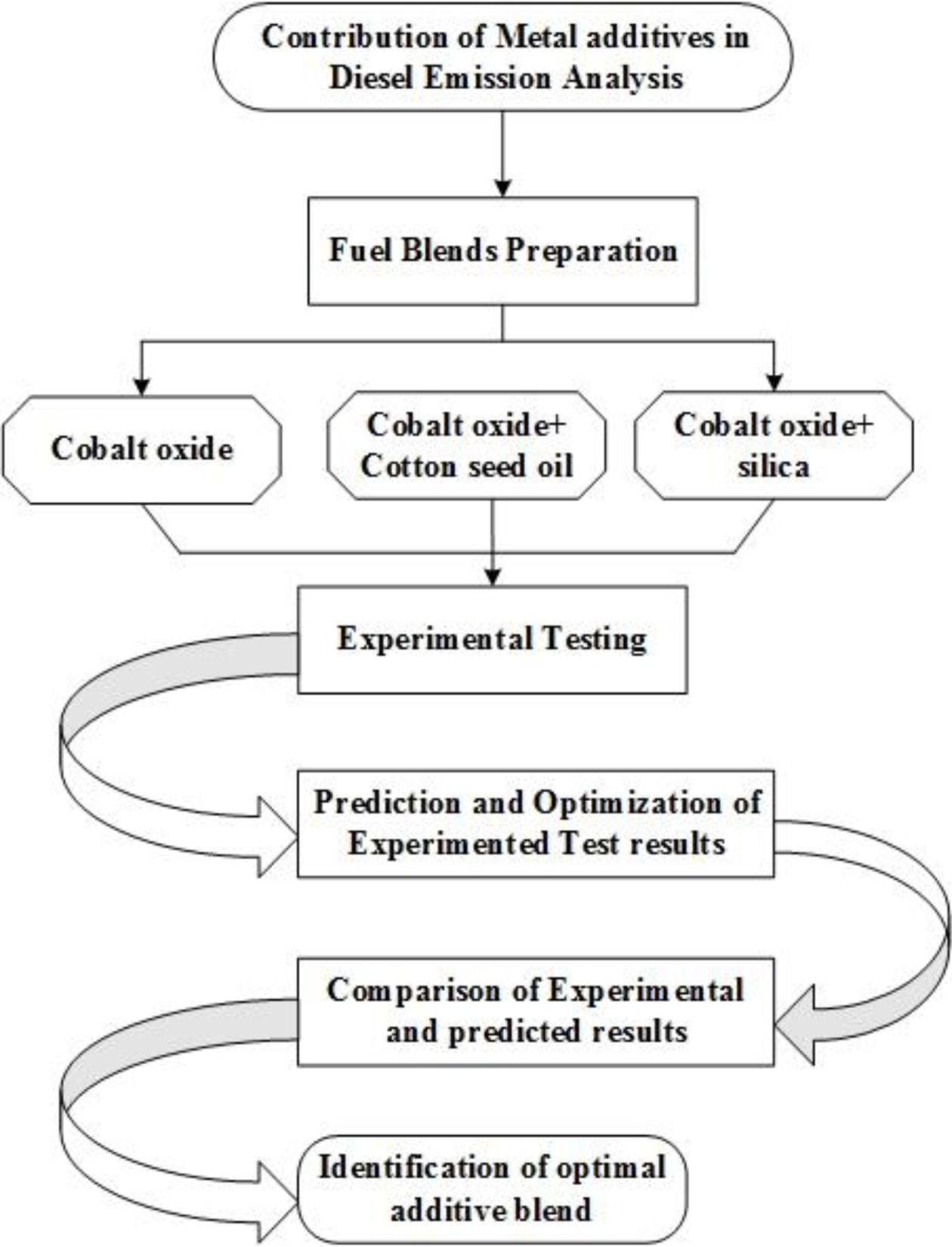
|
Fig. 1 Fuel blend architecture. |

|
Fig. 2 Design of the experimental system. |
The emission performance of cobalt oxide combinations
in the diesel fuel is tabulated by means of input parameters. The load and
compression ratios are acting as the input parameters and the emission outflow
of CO, HC, and NOx are performed as output. In which, the
compression ratio is constantly set as 7.5 and the value of load differs from 0
N to 100 N. The ANN –SVM machine learning techniques help to optimize and
predict the three cobalt oxide blends in diesel fuel. The MAT lab simulation
software is utilized for enlarging the application of ANN-SVM. In addition to this,
the comparison of both experimented and predicted results are
signified in the final section.
Table 4 signifies the emission rate of both normal and
cobalt oxide added diesel fuel adopted with five different load variations such
as 0, 25, 50, 75 and 100 N. In which, the emission rates of CO and HC are
optimal for the cobalt oxide added diesel and NOx emission rate is
minimum for the pure diesel fuel.
Table 5 displays the performance analysis of both pure
diesel and the cobalt oxide added diesel. The performance, such as brake specific
fuel consumption and the brake thermal efficiency are measured from the Co3O4
added biodiesel and the pure diesel. The table demonstrates that the increase
in load conditions increases the brake thermal efficiency and decreases the
brake specific fuel consumption.
The emission behavior of cottonseed and cobalt oxide
are tabulated in Table 6 with three different proportions. The emission rate of
CO and HC is minimized according to the
increasing of loads and the NOx emission rate is increased
when the load increases. The emission characteristics of HC and CO are best in
the 100 ppm of cobalt oxide and B60 blends of cottonseed oil. The NOx emission
characteristics are optimal for the 25 ppm of cobalt oxide + B40 cottonseed oil
blend.
The
BSFC and BTE performances of both cobalt oxide and cottonseed oil added diesel
are indicated in Table 7. From the two discussed performances, the brake thermal efficiency is directly proportional
to the load condition and the brake
specific fuel consumption is decreased
with the increase of load conditions. The 100 ppm of cobalt oxide with a
B60 blend of cottonseedoil yields the optimal range for both performances.
Table 8 shows the emission characteristics of both
additives of cobalt oxide and silicon oxide particles added diesel.
The 100 ppm of both additives results in less amount
of emission characteristics of three different gases, namely CO, HC and NOx.
The load variations increased with the increase of emission rate of all these
mentioned emission gases.
The performance rate of both cobalt oxide and silicon
oxide in the diesel fuel are tabulated in the above table 9. At the 100 ppm
range, both the BSFC and BTE performances are optimal for the Co3O4
and SiO2 added diesel, in which it achieves the 35.3% of brake
thermal efficiency and it is greater than the pure diesel fuel, where the brake
thermal efficiency of diesel is 21.94%.
Predicted
results using ANN-SVM methods
The
optimization of experimental data and the prediction of data are achieved with
the help of ANN-SVM methods in MAT lab. The three different compression ratios of 17.5, 19.5, and 22.5 and load
conditions such as 100, 125 and 150 N are utilized for predicting the
emission rates. From the overall testing conditions, load at 150 N and compression
ratio of 22.5 promotes superior emission and performance characteristics.
Generally, the engine emits lesser emission rates
when using 25 ppm of cobalt oxide and silica combinations in the diesel fuel.
The predicted emission characteristics of pure diesel and different additives
added diesel are tabulated in the given Table 10.
The forecasted emission outcomes of three combinations
of cobalt oxide diesel blends are tabulated in Table 10. The predicted outcomes
are achieved by varying the three different load conditions, namely 100, 125
and 150 N and the various compression ratios suchas 17.5, 19.5 and 22.5. From
all the additive combinations, the cobalt oxide with silicon oxide blend in the
diesel promotes better emission characteristics when compared
with the other additive combinations. At the same time, the emission behavior
of NOx is better in the predicted results of pure diesel than the
additive added alternative fuel. The emission characteristics of the three
proposed combinations of cobalt oxide are shown as wireframe graphical
representation in Fig. 3. From all these predicted results, the
emission gas of CO is yielded as very less amount and a large quantity of NOx
emission is created, when compared to the other emission gases. However,
when compared with the pure diesel fuel all the proposed additive combinations
produced a minimum amount of emission rates.
The conclusion is decided from the comparative analysis of
both the predicted and the experimented results. The whole proposed combinations
of cobalt oxide additives are optimized for the predicted results when
contrasted with the experimented values. Such comparative analysis is to be
discussed in the portion below.
In Fig. 4, the optimal level of emission outflow obtained from
both the experimental and predicted results is depicted
in the form of graphical representation. The combinations of diesel additives
namely, cobalt oxide, cobalt oxide + cottonseed oil and cobalt oxide + silicon oxide are contrasted in this section. In
which, the emission behaviors of three different gases are separately
represented in the proceeded graph. In all these mentioned graphs, the predicted values of emission gases show optimal outcomes than the experimental
values. From the predicted results, the optimal values of HC and CO emission
rates are yielded from the blend of 25 ppm of silicon oxide + cobalt oxide in
the diesel fuel at the load of 125 N and the compression ratio of 22.5. The
predicted emission outcomes are 0.018% of CO, 64.1% of NOx and
1.610% of HC. In these input conditions, the emission rate of NOx is
minimum for the pure diesel fuel. When using copper oxide nano particles on the bio diesel blend, the
emission rates are more when compared
to our optimized fuel blend combination [22].
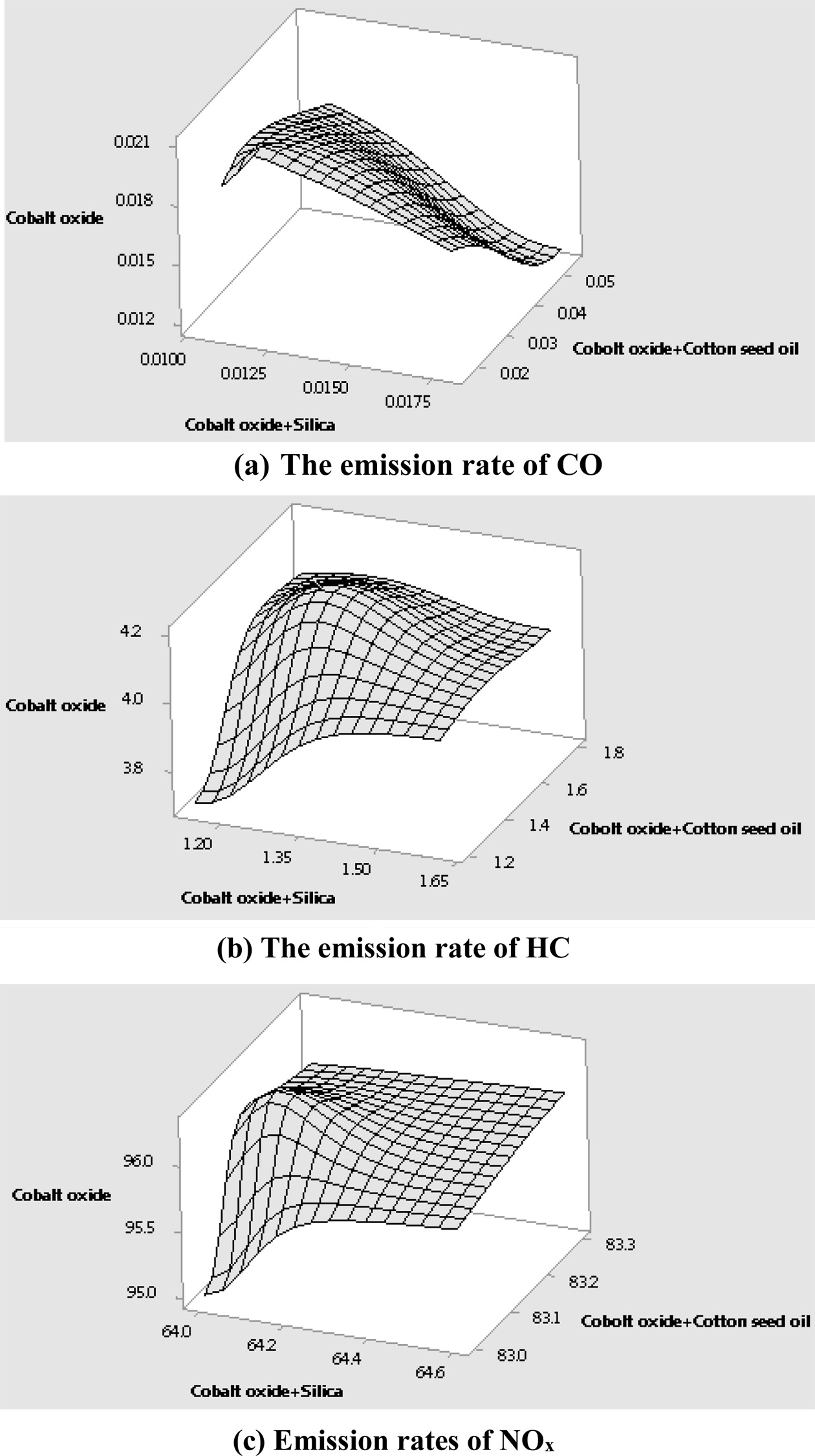
|
Fig. 3 Wireframe graphical representation for the predicted emission rates. |
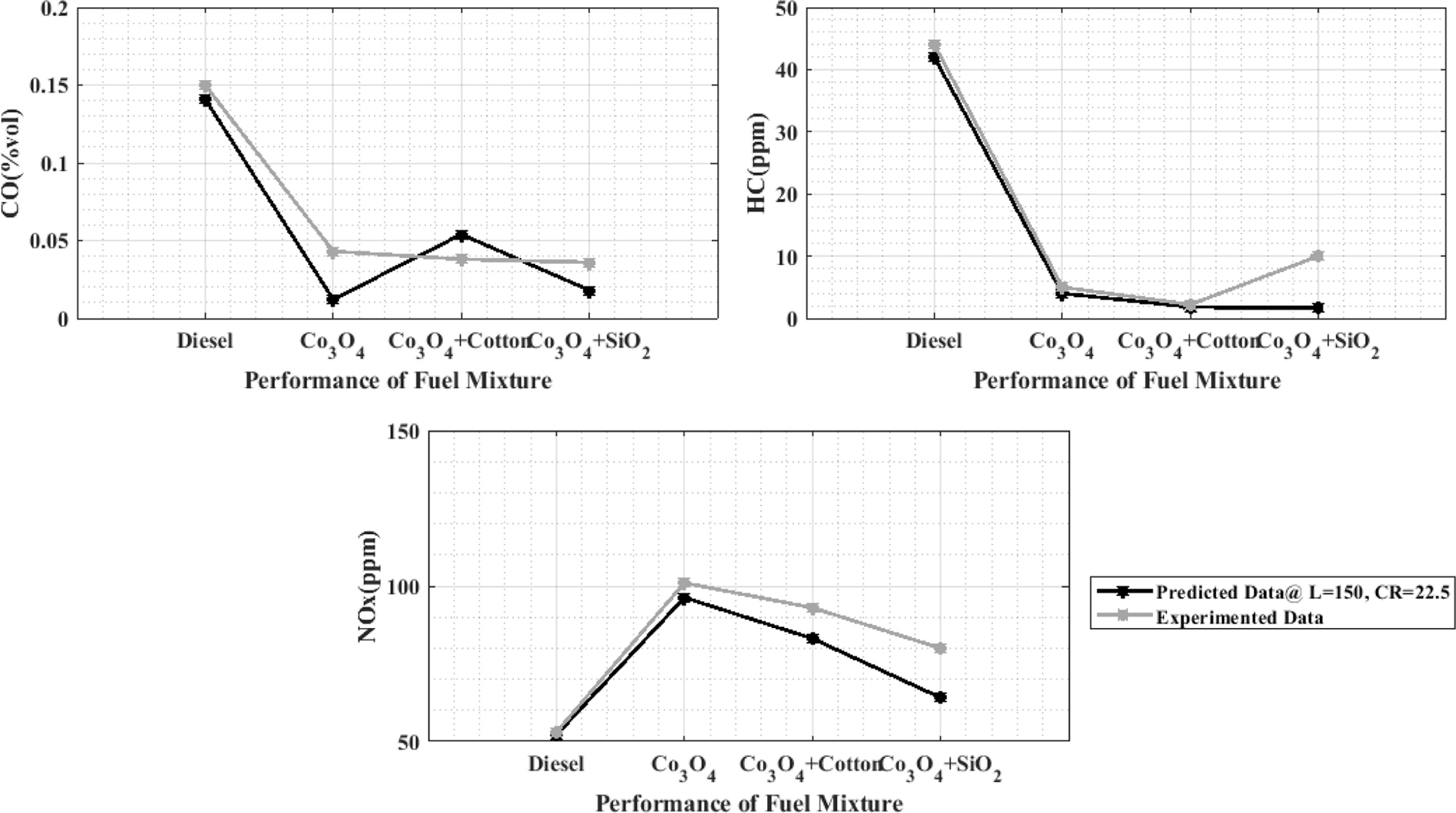
|
Fig. 4 Comparison of experimental and predicted outcomes of engine emission rate. |
In this paper, the emission rates of diesel fuel are
reduced by adding three varieties of nano and bio-additives. The additive mixes
utilized in the diesel fuel are cobalt oxide, cobalt oxide + cottonseed oil and
cobalt oxide + silicon oxide particles. The emission test is achievedby the use
of diesel engine with five different load input conditions such as 0, 25, 50,
75, and 100 N and the constant compression ratio 7.5. The learning
algorithm of ANN-SVM is utilized to optimize and
forecast the experimental outcomes. From the test results, it
proved that the emission of HC and CO are favorable for our proposed blended
cobalt oxide combinations. However, the NOx emission rate is optimal
for pure diesel fuel. The supreme yields are obtained from the proportion rate
of 25 ppm of cobalt oxide and silicon oxide; and the blend B60 of
cottonseed oil. These emission characteristics are predicted for the
25 ppm of cobalt oxide and silicon oxide and B60 blend of
cottonseed oil with three different compression ratios such
as 17.5, 19.5 and 22.5. Similar to the experimental outcomes, the predicted
result reveals that the proposed combinations of cobalt oxide yield favorable
CO and HC emissions and the emission rate of NOx is optimal for
diesel fuel. From the predicted results, 25 ppm of Co3O4
and SiO2 and B60 blend of cottonseed oil promotes
minimum and optimal emission rates. Generally, at load conditions
150 N and the compression ratio of 22.5, the 25 ppm of Co3O4
+ SiO2 in the diesel fuel emits supreme behaviors such as 0.018% of
CO, 1.610% of HC and 64.1% of NOx. In the future, the work is
extended by utilizing different combinations of nano additives to the diesel
fuel for improving the emission characteristics of diesel engines. In
addition to this, various hybrid types of the algorithm are also
adopted to optimizing and predict the optimal emission characteristics.
The authors express their sincere gratitude to Sri
Ramakrishna Engineering College, Coimbatore and PSG College of Technology,
Coimbatore for providing the facilities for the conduct of the research.
- 1. A. Sanches-Pereira and M.F. Gómez, J. Cleaner Prod. 96[1] (2015) 452-466.
-

- 2. R.P. Bajpai and U. Chandrasekhar, in “Innovative Design and Development Practices in Aerospace and Automotive Engineering” (Springer, 2016) 231-238.
-

- 3. E. Ileri, A. Atmanli, and N. Yilmaz, J. Energy Inst. 89[4] (2016) 586-593.
-

- 4. M. Yunus, M.S. Alsoufi, and I. Hussain H., J. Alternate Energy Sources Technol. 7[2] (2016) 34-44.
- 5. J.S. Basha, J. Energy Inst. 91[2] (2018) 289-303.
-

- 6. G. Ramakrishnan, P. Krishnan, S. Rathinam, R. Thiyagu, and Y. Devarajan, Int. J. Green Energy 16[6] (2019) 435-441.
-

- 7. A. Devaraj, D. Yuvarajan, and I.V. Kanna, Int. J. Ambient Energy (2019) 1-5.
-

- 8. S. Marasri, P.P. Ewphun, P. Srichai, C. Charoenphonphanich, P. Karin, M. Tongroon, and H. Kosaka, Int. J. Automot. Technol. 20[3] (2019) 569-578.
- 9. A. Gharehghani, S. Asiaei, E. Khalife, B. Najafi and M. Tabetabaei, J Clean. Prod. 210 (2019) 1164-1170.
-

- 10. Y. Devarajan, D.B. Munuswamy, and A. Mahalingam, Heat Mass Transfer 55[6] (2019) 1641-1650.
-

- 11. G. Ramakrishnan, P. Krishnan, S. Rathinam, R. Thiyagu, and Y. Devarajan, Int. J. Green Energy 16[6] (2019) 435-441.
-

- 12. H.S. Lee, S.M. Koo, and J.W. Yoo, J. Ceram. Process. Res. 13[S2] (2012) 300-303.
- 13. S.E. Hashemi Amiri, M.R. Vaezi, and A. Esmaielzadeh Kandjani, J. Ceram. Process. Res. 12[3] (2011) 327-331.
- 14. M. Muqeem, A.F. Sherwani, M. Ahmad, and Z.A. Khan, Int. J. Heavy Veh. Syst. 26[1] (2019) 69-94.
-

- 15. P. Madane and R. Panua, Int J Computational Intelligence & IoT (IJCIIoT) 2[2] (2019) 522-528.
- 16. L. Chen and J. Ren, J. Air Transp. Manag. 68 (2018) 176-186.
-

- 17. D. Khatri, R. Goyal, A. Darad, A. Jain, S. Rawat, A. Khan, and A.T. Johnson, Clean Technol. Environ. Policy 21[7] (2019) 1485-1498.
-

- 18. S. Vellaiyan, A. Subbiah, and P. Chockalingam, Fuel 237[1] (2019) 1013-1020.
-

- 19. N.K. Cheruiyot, W.C. Hou, L.C. Wang, and C.Y. Chen, Chemosphere 235 (2019) 726-733.
-

- 20. A.H. Haghiabi, H.M. Azamathulla and A. Parsaie, ISH J of Hydraulic Engineering 23[1] (2017) 102-110.
-

- 21. S.H. Kang and S.Z. Cho, Expert Syst. Appl. 41[10] (2014) 4989-4995.
-

- 22. K. Kalaimurugan, S. Karthikeyan, M. Periyasamy, G. Mahendran, and T. Dharmaprabhakaran, Energ. Source. Part A: Recovery, Utilization, and Environmental Effects (2019) 1-16.
-

 This Article
This Article
-
2020; 21(2): 217-225
Published on Apr 30, 2020
- 10.36410/jcpr.2020.21.2.217
- Received on Nov 20, 2019
- Revised on Jan 10, 2020
- Accepted on Jan 17, 2020
 Services
Services
- Abstract
introduction
contribution of ceramics in bio diesel emission analysis
experimental results and discussion
conclusion
- Acknowledgements
- References
- Full Text PDF
Shared
 Correspondence to
Correspondence to
- S. Yuvaraj
-
Assistant Professor, Department of Aeronautical Engineering, Sri Ramakrishna Engineering College, Coimbatore, India
Tel : +91 9976906912 Fax: +91-422-2461089 - E-mail: syuva91@gmail.com






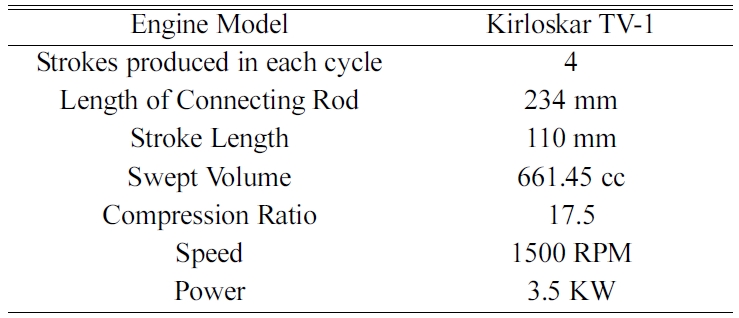

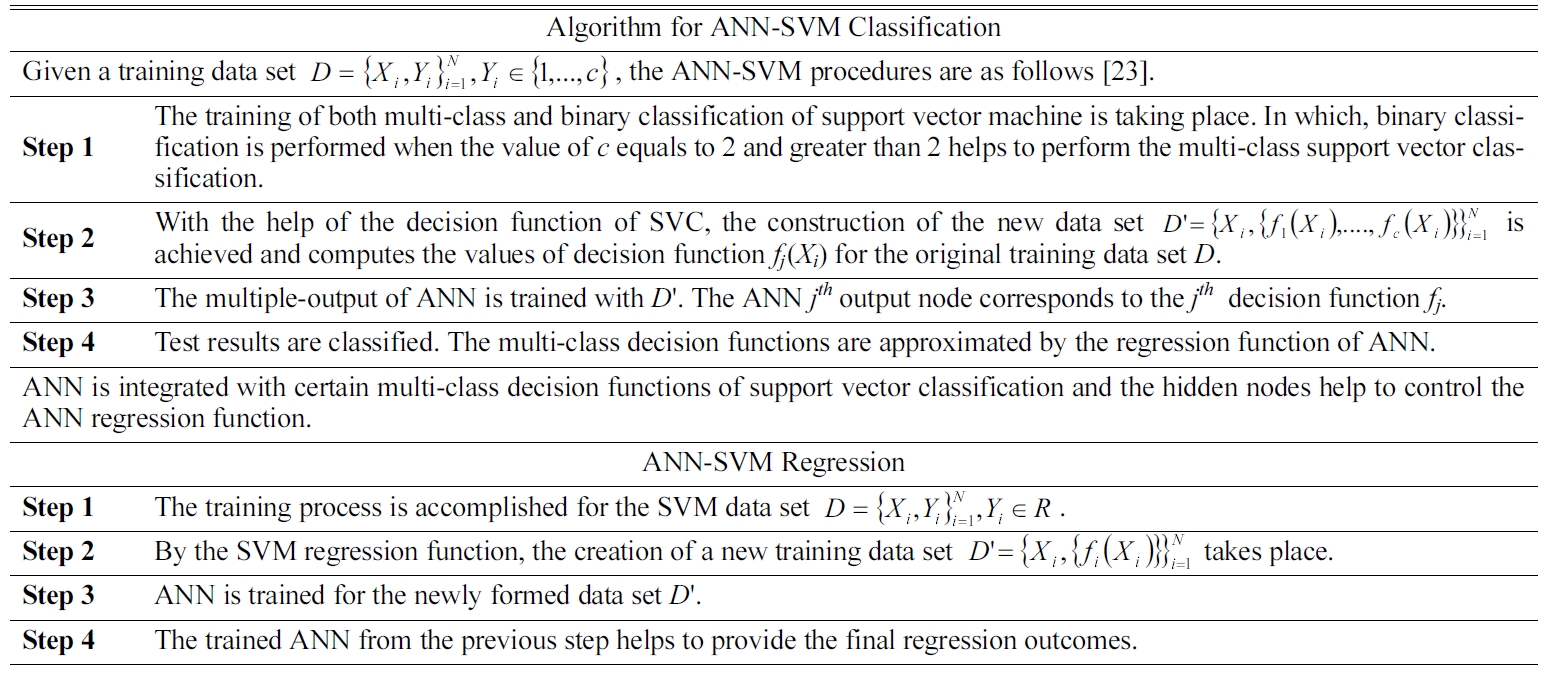
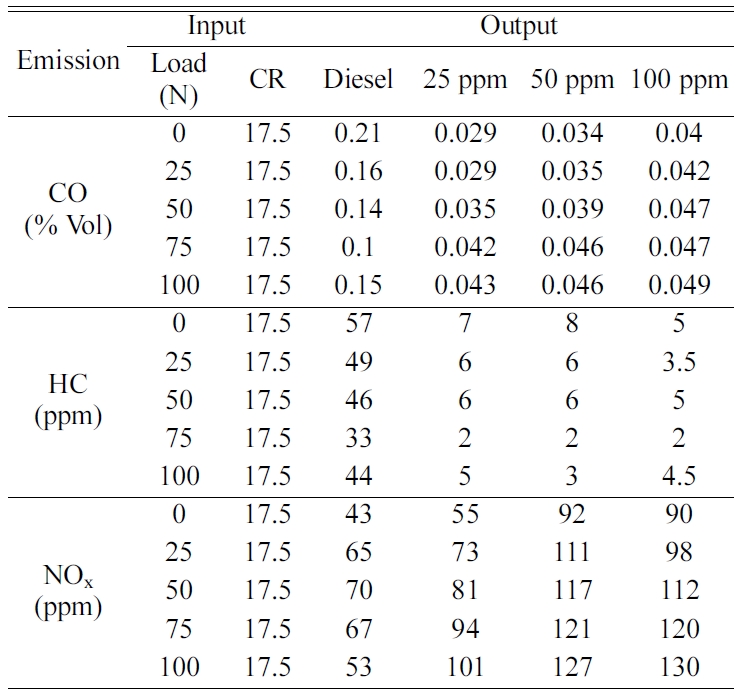
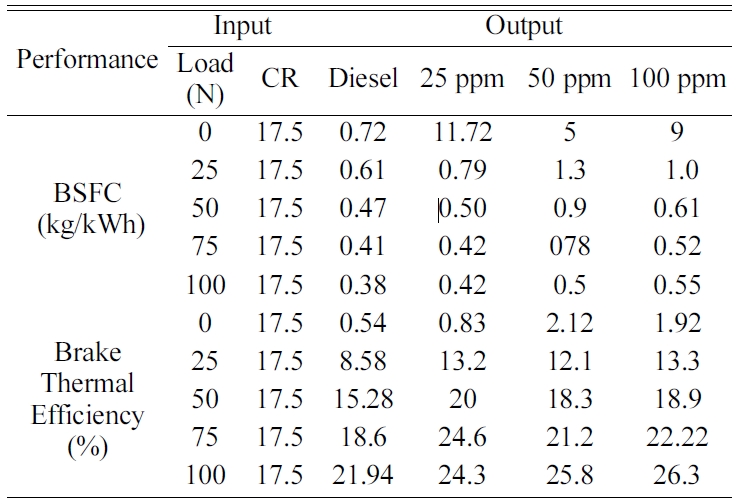
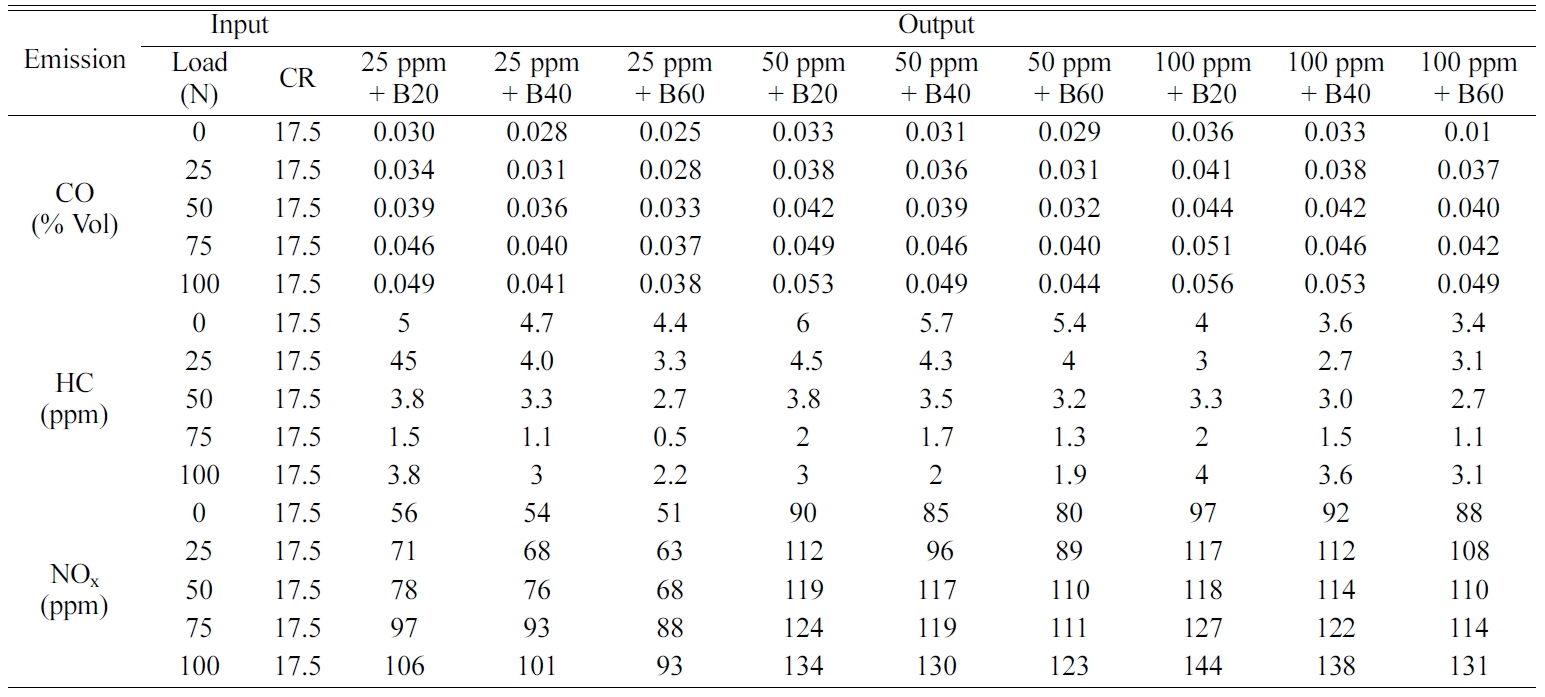

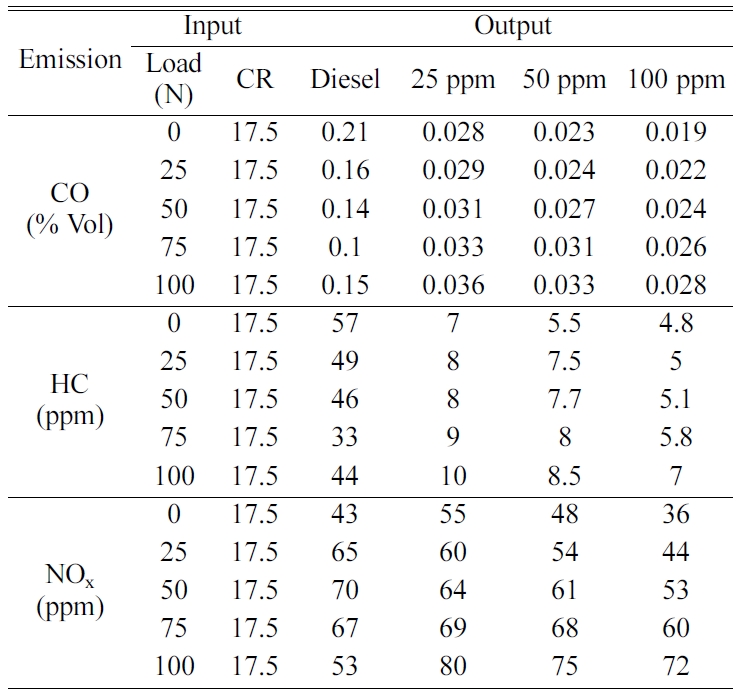
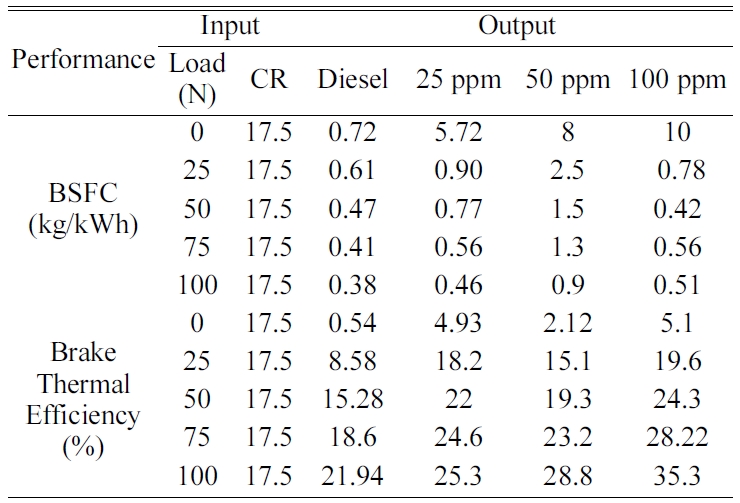

 Copyright 2019 International Orgranization for Ceramic Processing. All rights reserved.
Copyright 2019 International Orgranization for Ceramic Processing. All rights reserved.